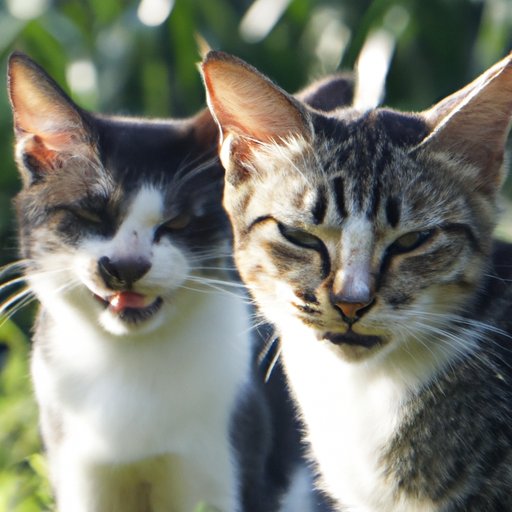Introduction
Have you ever heard a cat make a sound that’s not quite a meow, not quite a purr, but somewhere in between? That unique vocalization is known as trilling, and it’s a fascinating behavior that cats use to communicate with their owners and other felines. While cats use a variety of methods to signal their emotions and intentions, trilling is a particularly charming and endearing aspect of their behavior. In this article, we’ll explore why cats trill, how it differs from meowing, and how to interpret and respond to this vocalization.
Why Do Cats Trill?
Trilling is a versatile vocalization that can convey a variety of emotions and intentions. One of the most common reasons why cats trill is to express contentment. If you’ve ever petted a cat and heard them start to trill, it’s a clear sign that they’re feeling relaxed and happy. However, trilling can also be a sign of excitement, particularly if a cat is playing or exploring a new environment. Some cats even trill as a way to greet their owners when they come home.
Interestingly, trilling can also be a form of calling. If your cat wants your attention, they may trill to get you to come to them. Similarly, mother cats may trill to call their kittens back to the nest or to warn them of potential dangers. In each of these cases, trilling is a positive behavior that reflects a cat’s emotional state.
Trilling vs. Meowing
While trilling shares some similarities with meowing, the two vocalizations are distinct in several ways. Meowing is typically higher-pitched and longer in duration than trilling, and it’s often used as a more urgent or demanding way of communicating. In contrast, trilling is usually shorter and more musical in nature. While meowing evolved as a way for cats to communicate with their owners, trilling is primarily a signal that cats use among themselves.
In fact, trilling is believed to have originated as a way for mother cats to communicate with their kittens. When kittens are first born, they’re not able to see or hear very well, so trilling is a way for the mother to help guide them and keep them close. As kittens mature, trilling becomes a way for them to communicate with each other, particularly during play and socialization.
Interesting Facts about Trilling
Did you know that trilling is actually more common in certain breeds of cats than others? Many Siamese cats, for example, are known for their melodic trills, which are often accompanied by a distinctive chirping sound. Additionally, trilling can sometimes be a sign of manipulative behavior. For example, some cats may trill to get their owners to provide food or attention, knowing that it’s a sound that’s hard to ignore.
Another interesting aspect of trilling is that each cat has its own unique vocalization style. While some cats may have a high-pitched, musical trill, others may have a deeper, more gutteral sound. This individuality is part of what makes trilling such a fascinating aspect of cat behavior.
Responding to a Cat’s Trilling
If your cat trills at you, it’s usually a sign that they’re feeling happy or affectionate. Some cats may also trill if they want you to play with them or pet them. In response, you can offer your cat a gentle stroke or scratch behind the ears, or even give them a treat to reinforce their positive behavior.
However, it’s important to pay attention to your cat’s body language and context when interpreting their trilling. If a cat is trilling in an unfamiliar or stressful situation, it may be a sign of anxiety or fear. Similarly, if a cat is trilling but also has its ears flattened or its tail twitching aggressively, it may be a sign of irritation or aggression. In these cases, it’s best to give your cat space and allow them to calm down before trying to interact with them.
Conclusion
Trilling is a unique and fascinating aspect of cat behavior that helps cats communicate their emotions and intentions with their owners and other felines. By understanding why cats trill and how to respond to this vocalization, you can build a stronger bond with your furry friend and appreciate their individuality and personality.
